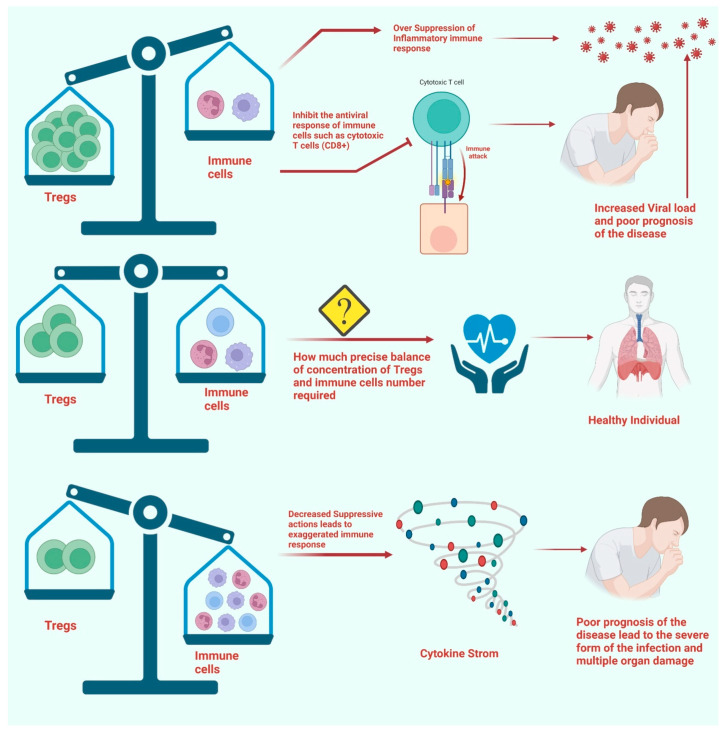Figure 3.
The figure represents the Treg involvement in the pathophysiology of COVID-19. The increased number of Tregs in severely infected patients can play deleterious effects by limiting the antiviral effects of effector T cells. Additionally, the overly expressed FoxP3 in Tregs can lead to excessive immunosuppressive activities, which lead to a poor prognosis of the disease. On the other hand, the substantial decrease in the number of Tregs cannot alleviate the excessively stimulated immune response in severely infected patients. Moreover, a balanced number of Tregs compared to Th1/Th17 T cells and other immune cells can prevent the poor prognosis of the disease.

